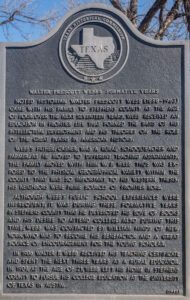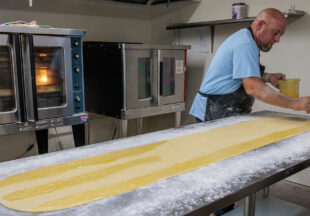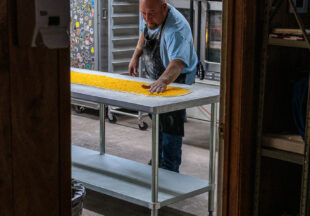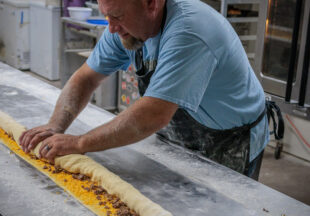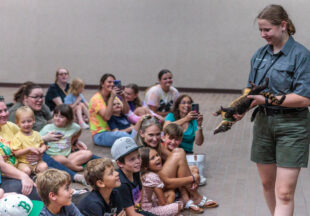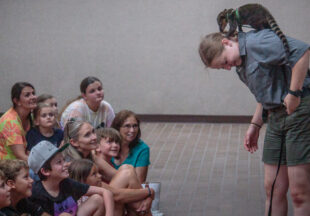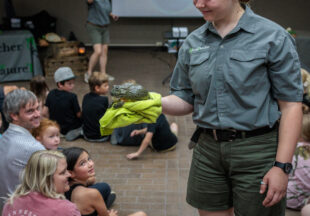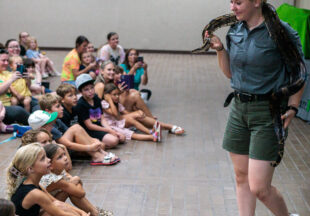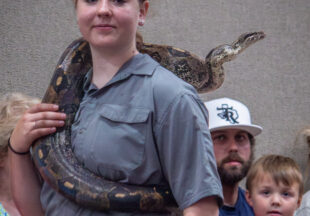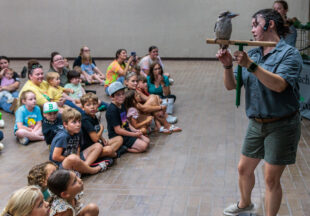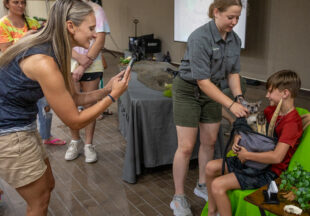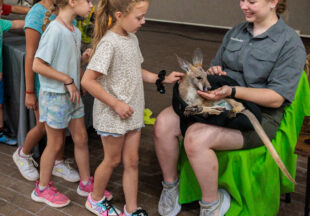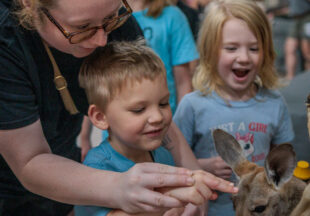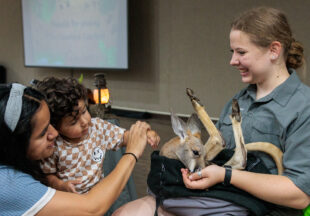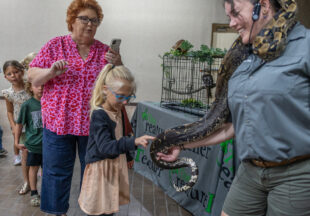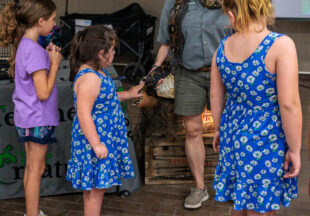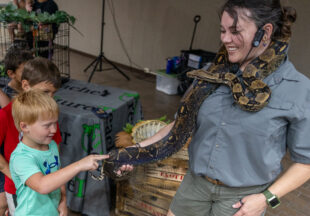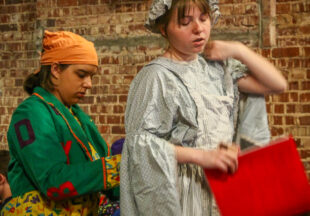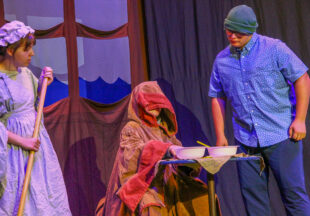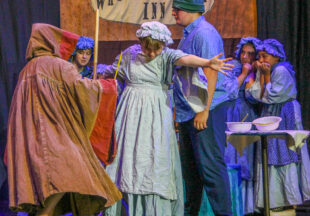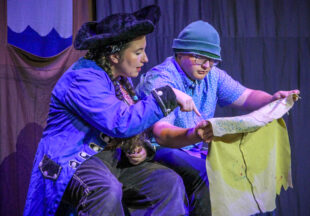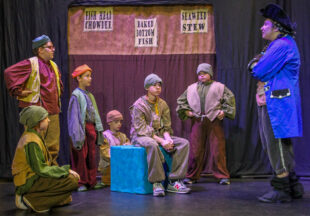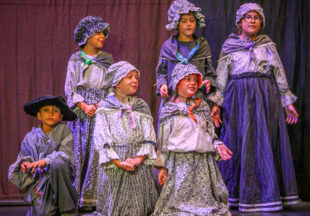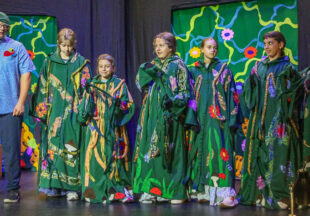Stephens County Chronicles: Hartsfield and Webb were vital to recording local history
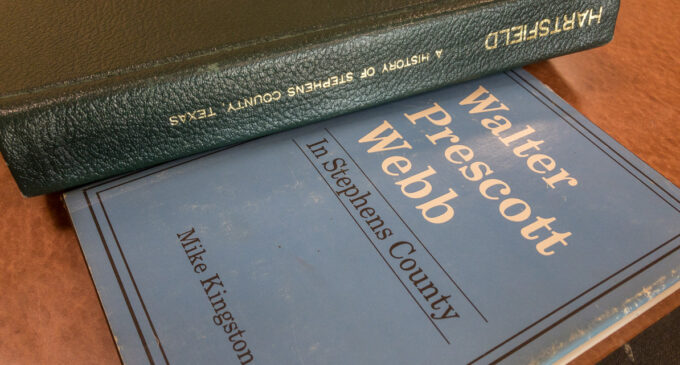
By Jean Hayworth/Breckenridge Texan
Many years ago, I discovered an awesome source on the early history of Stephens County and Breckenridge, the thesis written by Loy William Hartsfield to fulfill his master’s degree requirements at the University of Texas at Austin, in 1929.
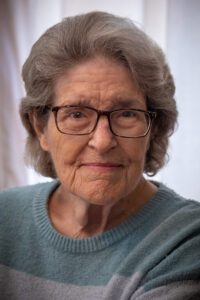
Jean Hayworth
The Swenson Memorial Museum has a copy, and there is one at the Breckenridge Library.
Hartsfield’s faculty adviser was Dr. Walter Prescott Webb, a history professor at UT who was from Breckenridge. In fact, there is a Historical Marker on the Stephens County Courthouse lawn honoring Dr. Webb, the noted author of the definitive history of “The Texas Rangers,” as part of his own master’s degree requirements at UT. Webb also wrote, “The Great Plains” (1931), which has a great deal of information about the development of Stephens County, as well as, “Divided We Stand” (1936), “The Great Frontier” (1950), and “More Water for Texas,” in 1954.
Hartsfield was born in McClennan County but lived in Cisco and Eastland while growing up. As a result, he was familiar with Breckenridge and Stephens County history, as he delved into the detailed history and early development of Breckenridge and Stephens County.
His thesis, titled “A History of Stephens County (Texas),” walks the reader through the detailed history of the county, from when it was part of the Vista District of Mexico, part of the original Peter’s Colony Grant to the development of Buchanan County and the name change to Stephens County. Hartsfield covers all of these changes in great detail and gives the reader a grasp of the historic development of Stephens County.
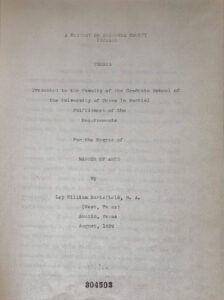
Loy William Hartsfield’s thesis
Hartsfield recognizes the earliest pioneers to Stephens County and among them was Dr. Peter Gunsolus and his family who settled here on Duck Creek, about 1850. The name of the creek was later changed to Gunsolus Creek to honor Dr. Gunsolus. There is a lot of false information about the good doctor, including stories that he had seven wives and 46 children. My extensive research found only five wives and 11 children. He had two sons who also lived here with their families, and a few of their children were wrongly attributed to the wrong Gunsolus. Other early pioneers included E.L Christesson, W.T. Fambrough, B.B. Greenwood, W.T. Gracey and Phoebe Boggs and her three sons. Early ranchers included W.W. Ray, C.C. Cooper, J.C. Lynch, C.T. Jonhnson and the Hitson brothers, Bill and John, as well as Levi Current and Bill Picket, who may be the reason for the name of the earliest village of Picketville. (The name could also have been named for the type of houses built at that time, picket houses.)
Hartsfield took several pages to list the early pioneers who settled in this area and the date they arrived and where they settled in the county. This listing is valuable information for the genealogists who are attempting to track the early settlement of their historic pioneer families. This information is also helpful to guide them to an area cemetery, if they can track what rural community their pioneer ancestors settled near.
Map work for this thesis was accomplished by Breckenridge High School students from the history department. The maps include a map of the earliest ranches and farms in the county and the small, rural communities with schools and churches and early cemeteries. The high school students included Weldon Powers, Anna Lou Lee, Byron Maxwell and Travis Griffin.
Did you know that Necessity had two other names, Mountain Valley and Cotton Plant, and was moved from the original site a half mile? All this information can be found in great detail in Hartsfield’s thesis. Did you ever wonder why many of the western counties are more or less square or rectangular and are mostly 900 square miles? Hartsfield explains the legislative process that made that happen.
Most residents in Stephens County have heard of Fort Davis, located in the northwestern corner of the county along the Clear Fork of the Brazos River. However, what about Fort Muggainsville, Fort Hubbard, Fort Salmon or Camp Cooper and Camp Breckenridge and why there were a string of forts along the western frontier? Hartsfield digs into all that information and gives descriptions of their locales and their purposes for protection. He also provides lists of the families who resided in the forts, as well as Fort Picketville.
Hartsfield also explained about the water issue in the county and that the early sources were from the underground cisterns. He tracks the development of the early churches in the county and where they were located and often provides lists of charter members of particular congregations, names of the early pastors, where the churches were located in the county and when or if locations changed. He does the same about tracking the early private schools and then the public schools and the location of all the rural schools, which numbered 100 at one time. The Swenson Memorial Museum has many photos of the students who attended the different schools in the county, which can be found upstairs in the rural classroom exhibit.
Of course, Hartsfield traces the earliest development of oil in the county, as early as 1916, and the ongoing Oil Boom, with the location of early wells, how deep they were drilled and how many barrels they produced per day. Also, the production of natural gas and the carbon black plants south of Breckenridge are included.
What about early justice in Breckenridge under a large oak tree? The first jail, with dimensions and how much it cost, is described. Also, Hartsfield provides early lists of officials who guided the development of Stephens County from when Breckenridge was voted as the county seat, voted on by the male residents, who were age 21 and owned land in the county. What about the early courthouse with dimensions and cost and the present courthouse and cost? All that information is provided in the very thorough thesis. There is so much to discover in one volume; the detail and research is to be commended.
If a researcher is attempting to find their earliest roots in this area, this volume will give them a head start and a great deal of detailed information.

Walter Prescott Webb
As I mentioned earlier, the faculty adviser who signed off on Hartsfield’s master’s thesis was Dr. Walter Prescott Webb. His parents, Casner and Mary Kyle Webb, brought him to Stephens County when he was four years old. By the time he was 14, his father had established a homestead on a quarter section (160 acres), which they had to occupy for 10 years, pay all the taxes and improve the land in order to gain ownership. The land was in the southeastern part of Stephens County and was stated to be the least desirable land for cultivation, the most remote, farthest from schools, church and town and equidistant from three different rural schools, three miles to each. The elder Webb was a teacher and was often gone for four to five months each year, which left the young Webb to clear all the land, build fences, plow the fields, haul water and logs, clear brush and fell trees, as well as whatever else was required to keep the farm going. He also had to help his mother and sister. Unfortunately, there was little time for school, which meant the young Webb attended on a hit and miss schedule.
The senior Webb established a fruit orchard and expanded it each year. It included peaches, plums, pears, apples and grapes. That orchard produced as much as $100 per acre, which greatly helped the family finances. He was also wise about crop rotation and studied the soil to decide what crops to plant. Each year they planted less and less cotton in view of the boll weevil moving further north and overtaking Stephens County by 1911. Casner was no longer planting cotton by then.
As the younger Webb approached 18, his father allowed him to go to school at Ranger full time for a year, to make up any subjects he needed to sharpen his schooling. Webb’s goal was to take the two-day Teacher Certification Exam, which he passed and gained his Second Grade Teacher Certification. Webb’s first teaching assignment was at the Mountain School in Eastland County. He earned $42.50 per month for the four months of school. His next school was four miles from Ranger, at the Barnet School. He had 15 students for four and a half months. Then in 1907, Webb taught at Center Point School, which was three and a half miles from the Webb homestead. He only taught there for two and a half months at $47.50 per month. At that point, Webb purchased an automobile and was able to take his sister to that school.
After he finished at that school, Webb took the First-Grade Teacher certification exam and passed it. As a result, Webb was selected to teach at the Merriman School in Eastland County for $75 per month. At that point, Webb received a letter from his mentor, William E. Hinds, who questioned Webb about his plans to go to college. As a consequence of getting that nudge from Hinds, Webb applied to the University of Texas, at Austin, at the age of 21. Webb also had a recommendation from Hinds that allowed Webb to enter UT and make up his deficiencies. Webb lived with C.M. Caldwell, another Breckenridge native, who was enrolled in law school at the time.
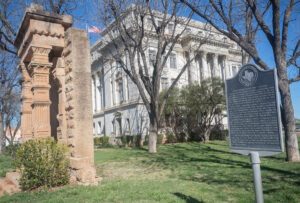
A historical marker on the Stephens County Courthouse lawn is dedicated to historian Walter Prescott Webb. (Photo by Tony Pilkington/Breckenridge Texan)
By Webb’s second year, his money had run out and Hinds didn’t have any more funds to send him. As a result, Webb taught school in 1911-12, at the Bush Knob School in Throckmorton County for $90 per month. At the end of that school year, Webb had enough to return to UT for his third term and took an interesting course, Institutional History, which encompassed geology, anthropology, geography, economics and political science. That course gave Webb the final nudge to reach out and major in history. Also, Webb met his future wife, Jane Oliphant.
In 1913, Webb once again dropped out of school to earn some money to finish and graduate at UT. Webb taught at the Beeville School in Stephens County. By the fall of 1914, Webb was hired to teach at Southwest Texas State University for $150 per month and could keep some books for another $300. Webb returned to UT in January 1915 with his mind set to complete one year of work in six months in order to graduate in May 1915, which he accomplished.
Webb was hired to be the principal at Cuero High School and after a year, Webb decided to quit. He went to San Antonio, married Jane and the following year they had a daughter.
By 1918, Webb was teaching history at UT and continued to teach history there for the next 45 years. In 1920, Webb earned his master’s degree at UT, while teaching there, and wrote his first book, “The Texas Rangers,” which is considered by other Texas authors to be the definitive book about the history of the Texas Rangers.
In the summer of 1920, the Webb family packed up and went to the University of Chicago to work on his doctorate degree, which he completed by 1923, while continuing to teach at UT as part of the history department. In 1931, Webb wrote the regional history, “The Great Plains,” which has a great deal of information about Stephens County, the Great Plains area and the Cross Timbers area. According to Wilbur R. Jacobs, John W. Caughey and Joe B. Frantz, and most historians considered “Turner, Bolton and Webb,” as the three historians of the American Frontier. From that point, Webb went on to write “Divided We Stand” (1936, “The Great Frontier” (1950) and “More Water for Texas,” (1954). In 1961, Webb edited, “Washington Wife” by his second wife, Terrell, who he married after his first wife died.
Walter Prescott Webb was a great deal of help for the young Hartsfield, as his faculty adviser for Hartsfield’s master’s thesis in 1929. Webb knew a great deal about the cultural and agricultural life in Stephens County and knew who Hartsfield needed to visit with as he compiled his thesis. The volume is in the research vault of materials at the museum and is in a special section of books at the Breckenridge Library.
My goal is to find the volume online somewhere and get my own copy. It is that valuable as a resource on Stephens County.



